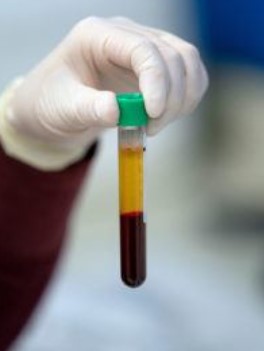By Kay Ledbetter
The next crop of calves is what keeps the cattle industry in business. Knowing this, a Texas A&M University study aims to reduce reproduction failure, which can cause a significant loss to the U.S. beef industry.
Rebecca Poole, a postdoctoral research associate in the College of Agriculture and Life Sciences Department of Animal Science, has received a two-year grant from the U.S. Department of Agriculture National Institute of Food and Agriculture.
Poole’s project, “Hormonal and Immunological Influences on the Uterine Microbiome in Cattle,” is aimed at developing a better understanding of the relationship between reproductive hormones and immune changes as well as the microbiome of the reproductive tract in beef cattle.
“Like a fertility clinic for humans – it’s the same idea, just bringing it to the beef cattle world,” Poole said. “They have found there are a lot of relationships between the microbiome of the reproductive tract and fertility in women, and so the research has continued from there to establish the understanding of microbiomes in other species, like our livestock.”
She said now that the technology is available to better understand the microbiome, it’s a great time to work in this area of research. Microbiome research in the past was dependent on being able to culture certain bacteria in a petri dish, but that was a limiting factor, because only about 1% of the bacteria can be cultured.
“Now, using a sequencing-type approach, we are able to determine all the bacteria in a certain environment,” Poole said.
The Reproductive Microbiome
Poole said the presence and activity of symbiotic bacteria in the reproductive tract and its effects on fertility is relatively unknown in cattle, so that is where she will concentrate her research.
She believes that variation in reproductive hormone secretion and/or immune function control the bacterial species diversity in the uterus, which subsequently affects pregnancy establishment and maintenance in beef cattle.

Poole holds a blood collection tube post-centrifugation. The tube is coated with sodium heparin for the extraction of plasma (yellow portion) which can be used for hormone detection assays.
“The producer doesn’t necessarily need to understand the different types of bacteria,” Poole said. “My research will take the concepts the producers understand along the lines of the estrous cycle, estrous synchronization protocols, and reproductive hormones; and I will see how those relate to the microbiome so that we can find ways to potentially manipulate it, from a hormonal standpoint, to create a healthy microbiome to establish a pregnancy.”
She said she will be using standard estrous synch protocols that producers are used to, such as using GnRH or prostaglandin injections to create a high estrogen or high progesterone environment and seeing how that manipulates the bacterial species.
“We have found differences between cattle that are essentially able to establish a pregnancy versus those that do not, differences in their uterine microbiome before breeding,” Poole said. “So really we are just trying to figure out if there are other mechanisms that are controlling that microbiome, like reproductive hormones, and also the immune system is another component that is most likely involved with changes in the microbiome.”
Project Goals, Projections
Poole’s project further contributes to the Department of Animal Science’s Areas of Excellence – pregnancy and developmental programming, which emphasizes an increased understanding of animal reproduction at molecular, cellular and whole animal levels.
The first objective of this project is to look at the relationship between differing levels of reproductive hormones and the reproductive microbiome prior to breeding. The second objective is to look at the relationship between the immune system and reproductive microbiome.
Poole said she will be collecting samples over the next month and will artificially inseminate the cows to look at pregnancy results. She expects by the end of summer to have results that will help begin establishing the relationship between the reproductive hormones and the reproductive microbiome.
“This will help us gain a better understanding of what is influencing the reproductive tract microbiome in cattle and help us focus on improving fertility in beef cattle through enhance management practices,” she said. “The ultimate goal is to increase the sustainability of the animal production industry.”
Poole said in addition to this research, she is a part of another project looking at nutritional effects on the microbiome, and that should be available around the same time.
“So, our suggestions to producers could be based on nutrition or it could be a hormonal thing, which means we suggest they take a blood sample at a certain point in time to see where a cow stands – is she a good contender for breeding based on her hormone concentrations?” she said. “It may mean, for example, suggesting the use of cattle heat detection patches, which is an indication of estrogen concentrations at breeding.”
Poole said knowing this information will allow producers to feel more comfortable at the time of breeding based on information of the cow’s reproductive hormones, which will indicate what its reproductive microbiome looks like.
Not every producer will use this information – not those, for example, who just turn the bull out in the pasture and hope for the best, she said. This would be geared toward someone who has an extensive management program of some kind, utilizing estrous synchronization and artificial insemination.
“Based on my results, I can provide suggestions for producers and say, ‘You need to take a blood sample at this time, and let’s look at her reproductive hormone concentrations or her immune cell levels and see if her uterine microbiome environment is acceptable for breeding,’” Poole said. “Again, it is like the human fertility clinic, and we can estimate likelihood of establishing a pregnancy.”
Source : tamu.edu